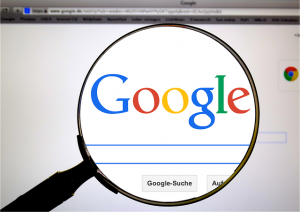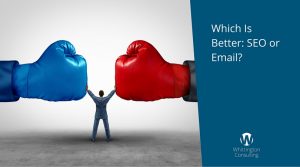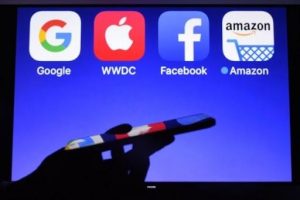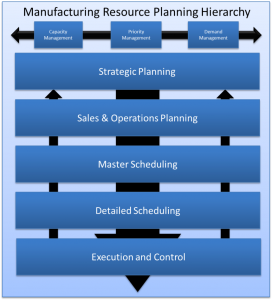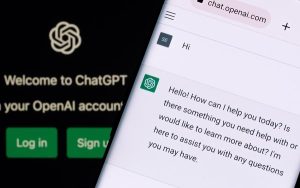If you’re feeling overwhelmed by the amount of data that’s already online via blogs and social media, consider this: by 2020 that information will increase by 600%. Overwhelming, no? I was just at Social Media Marketing World in San Diego and a lot of talk was around the noise, as well as a term you’ll be hearing a lot in the future: Content Shock. What’s Content Shock specifically? Well, it’s too much of just about everything. Out of Content Shock comes what I call Content Fatigue.
The problem is that people are exhausted from all the content and all the work it takes to keep up with social dialog and news. Yes, there are shortcuts and some handy tools for automation, but at the end of the day, it still comes down to our time and our attention. Both of which are in short supply.
Your consumer faces this, too. This never-ending barrage of information that finds its way to their doorstep. They then find themselves sifting through seemingly endless streams of information trying to find the kernel they were looking for. Let’s face it, it’s not easy.
As time propels us into this age of overwhelming news feeds and information, it will be important to figure out ways to stand out and gain attention without overwhelming your market. I attended a session by Mark Schaefer where he talked about this trend of endless data and what we can do about it (See here: http://www.businessesgrow.com/2014/03/17/content-shock-strategies/ ), and while I loved his insight and input, I wanted to break this down even further and make it a bit more palatable for those of us who don’t have teams at the ready to create some new game to enchant our buyer or who can develop videos that can go viral. Most of us don’t have that kind of access, but we still want to rise above the noise. Though Mark’s tips are tremendous, I think that even before we dig in there, we must first look here:
Be an Expert: First and foremost you need to be an expert. If you’re not comfortable with that you need to get over that and realize that people love experts – even if you are a fiction author, be the best, be the most knowledgeable, and be the kind of expert that you’d want to follow. Why does this matter? Because in the years to come (and even now) consumers would rather gravitate to one voice they can trust, than 20 voices they aren’t so sure about. It’s a way to help them cut through the noise and a great way for you to stand out.
Know the Experts: Beyond your own expertise, you’re going to find you need to align yourself with experts in your market. People with a significantly bigger platform you can get to know. Why? Because you’ll want to engage with them, and build a relationship with them so they trust you and your product enough to share it with their people. We’re finding that people don’t trust messages, people trust people. As we build even more “noise” around ourselves we’ll find this statement becomes even more pronounced.
Be Excruciatingly on Point: When people like Guy Kawasaki or Chris Brogan or even Gary Vaynerchuk meander off of their core message, I really don’t give it a second thought. Why? Because they’ve spent years honing their original message so we’re willing to give them a bit of leeway or creative license to “meander” as they see fit. Most of us don’t have that luxury. Once you zero in on your message (benefit statement) you’ll want to own it and stay true to it. Don’t one day talk about the fabulous new workout routine your team developed and the next day talk about Chris Martin and Gwyneth Paltrow’s divorce. It doesn’t make sense and the more you meander, the more you will lose people, and your message will vanish in the ether.
Email Lists: Email is pretty un-sexy these days, isn’t it? I mean let’s face it, when you have sites like G+, Instagram, and Pinterest, can create Infographics, and post short videos onto Vine, it makes email marketing seem like the distant cousin of something very 1976, doesn’t it? The truth is that despite its lack of sexy, email marketing still works, and as social media becomes more cluttered it’s getting harder and harder to get your posts seen. But an email opt-in list is one way to get onto the radar screen of your reader (with their permission) and share helpful information with them which a) helps to establish your expertise and b) keeps them in your funnel, something social media does too, but only to a point.
Know Your (Readers) Limits: I have a friend who has great content and sends them in daily email posts and therein lies the problem: daily emails. I don’t know about you but unless you’re giving away a free Starbucks gift card in every email, there is very little that I need to see on a daily basis. If you’re in this situation (i.e. sending daily emails) I would recommend instead that you consider changing this to weekly or even better, bi-weekly. Or, what if you created a G+ Opt-in circle group which encourages daily emails? Even better. I can now check in when I want and don’t have to be overwhelmed with a new email to open, file, or delete. As information from a variety of sources continues to clutter our inbox and radar, you don’t want to contribute to that clutter.
Mind Your Tone: Would you watch a TV show that was all bitching all the time, with no reprieve? Likely not. Still it amazes me how many people use a social setting to promote their own, negative agenda. The thing is, the more cluttered things get, the less tolerant your reader or consumer becomes. Be positive and be consistent. If there is a challenge your industry is facing, share that challenge and solution with your end-user. They will appreciate that much more than an endless rant about all that’s wrong with the world. Consider the folks who love to rant about Amazon. This negative banter accomplishes nothing and does not contribute to the overall conversation in a constructive way. Be good or be gone.
Dominate a Narrow Market: Yes, we’d all like be Kings and Queens of our market but the truth is, it’s harder and harder to get to the top of anything. I get that you want to “own” the business market, but frankly consumers are seeing much more finite information these days. Case in point, when it comes to books: short is the new long. Content that is hyper-focused on one, singular area can draw in a readership or consumer following faster than content that is too general. Own your niche, and while “niche” seems to imply small, the effects can be anything but. For example, the Amazon classes I teach: How to Sell Books by the Truckload on Amazon, I can’t keep these books on the shelf and the class is the most popular session I’ve ever taught. This niche is anything but small, in fact it’s among the biggest things I’ve ever done.
Be. Human. In a world full of automation, a human element is not just helpful, it’s mandatory. Recently, after presenting at a large event I was speaking to a few attendees who commented that they were surprised that I responded to my own emails. Wait. Really? They said they loved the human touch of my firm, more people, less automation. While automation isn’t a bad thing, and every company needs to automate some aspects of their work, going 100% automation is never a good idea. I find that consumers really appreciate the human connection and, as things become more cluttered in terms of online noise and social media activity, the human element will become even more crucial to connecting with your reader or consumer in an authentic and memorable way.
Unself the Selfie: Maybe it’s just me, but I think we need less “me” in social media. Also, I think that selfies, or the unselfie, could be used in ways that will help promote reader or customer engagement. Instead of creating selfies, which really just push you, why not encourage customer participation and give them a reason to share your content with others? Encourage readers to share a selfie with a copy of your book (and give them a prize to share this picture). Consumers do things for their reasons, not yours, and as more and more content gets filtered through the system, we’re too disengaged to share and yet, consumers have the power and voice you need. Consumers/readers are the key to the success or failure of your marketing. Finding creative ways to engage them will become even more paramount as new products, services, and books continue to flood the market.
Thinking about these things early on will help you avoid getting lost in the consistent onslaught of messages and products. As we continue to add more noise to our lives, it will be the consistent, helpful messengers who remain steadfast on their message that will get our attention. But, you might argue, doesn’t flash capture us, too? It does, but typically only for a little while. You have a choice between a long-term audience, or a quick, fleeting romance. Which will you choose?
Follow Penny C. Sansevieri on Twitter: www.twitter.com/bookgal
Read more on Huffington Post
(581)
Report Post